Separatism in Iran. Will the country's unity destroy internal conflicts?
Ethnic Mosaic of Iran
Meanwhile, in Iran there are very significant ethnic contradictions, due to the extremely diverse national composition of the country's population. Where many nations live, there will inevitably arise resentment towards each other. One wants more, others do not want to give up already existing. This is how ethnopolitical conflicts originate and develop, some of which develop into real wars. So far, Iran has been able to prevent the emergence on its territory of such separatist movements that would represent a truly significant danger to the integrity of the Iranian state and the preservation of the current political regime. However, the United States, Turkey, and Saudi Arabia, and other ideological and geopolitical rivals of Iran very much hope that they will succeed in splitting the Iranian state, primarily through the support of separatist movements. Multi-ethnicity is always interesting, but not always politically secure. So it is in the case of Iran. 78 408 412 people live in the country (2015 data). It is one of the largest populations of the countries of South-West Asia. Among the countries of the world in terms of population, Iran is ranked seventeenth, which is also, in general, quite a lot. Iranians are a political nation, that is, an artificial construct that has been formed over the years of the Iranian state.
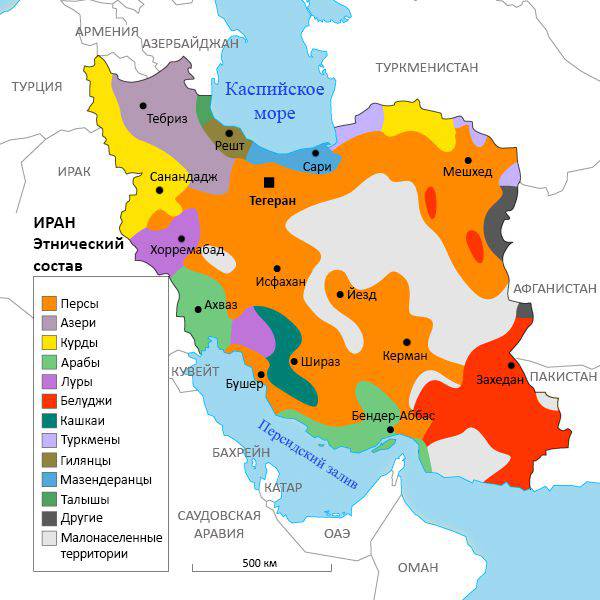
In fact, the population of the country consists of dozens of different peoples and ethnic groups belonging to different language families and professing different directions of Islam, as well as Christianity, Zoroastrianism, and even Judaism. The ethnic basis of the Iranians is the Persians. However, there are only about half of the total population of the country (according to various sources - from about 40 to 60% of the population). It was the Persians who for thousands of years made the main contribution to the creation and development of Iranian culture and statehood. The Iranian official language Farsi (Iranian group of the Indo-European family of languages) is the language of the Persians, which, however, is understandable to almost all other Iranians. However, as we see, the Persians never constituted the absolute majority of the population of the country. Therefore, the other largest peoples of Iran, besides having their own territories of compact residence, have repeatedly attempted to secession, declare independence, even though their representatives also made no less than the Persians contribution to the creation of a single Iranian state. The second largest after Persian people of Iran are Iranian Azeris, who make up from 16 to 40% of the country's population. They inhabit the so-called. Iranian Azerbaijan - the north-western regions of the country. Another large nation is the Kurds living in Iranian Kurdistan and ranging from 5 to 10% of the population. Talyshs, Gilians, and Mazendarans, the Iranian-speaking ethnic groups, gradually assimilated by the Persians and constitute up to 7% of the total population of the country, inhabit the southern coast of the Caspian Sea. In the south-east of the country, the vast desert lands of Baluchistan inhabit the Baluchs; in the south-west, on the border with Iraq, Arabs live. In addition, other nations live in Iran. The Iranian-speaking people include the Lurs and Bakhtiars living in the south-west of the country, as well as the Charaymaks. By the Türkic-speaking - the Turkmen of Northeastern Iran, the Kashkays, the less numerous tribes of Karaya, Karagozlu, Taymurtash, Hamsa. In addition, a significant number of Assyrians, Armenians, Georgians and even a small group of the Jewish population live in Iran. Finally, an ethnoconfessional group stands out within Persians, preserving Zoroastrianism as a religion - these are the hebra.
Among the peoples of Iran, who are potentially capable of separatism and have repeatedly declared their desire for autonomy, or even to achieve full political independence, one can list Azerbaijanis, Kurds, Baluchis and Arabs of Khuzestan. These peoples have the most distinct identity, their own rich historyand, most importantly, they all have fellow tribesmen in other states with whom they expect to connect. The history of Iran in the twentieth century was very turbulent and repeatedly provided the people of the country with the opportunity to declare their aspirations for independence and even to create virtually independent state formations (although they did not exist for long - these were the Gilyan Soviet Republic, the Democratic Republic of Azerbaijan, the Mekhabad Republic). The separatism of the Iranian peoples was supported by external forces - the Soviet Union, Britain, Turkey. In turn, the central leadership of Iran, starting with the representatives of the Qajar and Pahlavi shah dynasties and ending with the leadership of the modern Islamic Republic of Iran, has made and is making every effort to overcome the centrifugal tendencies. The most active efforts to unite the peoples of Iran and develop a model of a single Iranian civil identity came to power, General Rezahan Pahlavi, who came to power in 1925 and became the founder of the last dynasty of the Iranian shahs of Pahlavi. Despite the fact that Reza was half Azeri - half Mazendaran, he considered it necessary to form a single Iranian nation on a Persian basis. It was during his rule that the country officially changed its name from Persia to Iran. Under Rezah Shah Pahlavi, bans on learning the native language in schools for representatives of other peoples of Iran also began, as the Shah tried to assimilate all the peoples of the country into a single Iranian nation at an accelerated pace. However, the Shah this task was not under force. On the other hand, Pahlavi’s actions contributed to the intensification of separatist movements, which began to take shape during the reign of the previous Qajar dynasty (by the way, also of Azerbaijani origin, the Qajars were descended from the Turkic Qajar tribe).
Iranian Azerbaijan. Is there a threat of separatism?
The Azeri separatist movement has always been the most serious and numerous in Iran. This is explained by the fact that the Azerbaijanis are the largest in number, after the Persians, the people of Iran, as well as the presence of sovereign Azerbaijan in the neighborhood. However, national liberation attitudes among Iranian Azerbaijanis began to spread even when Northern Azerbaijan was part of the Russian Empire and did not have autonomy, and Southern Azerbaijan was part of Persian shah. By the beginning of the twentieth century. Iranian Azerbaijan was one of the most economically and culturally developed regions of Persia. The Turkic Azerbaijani tribes made an enormous contribution to the formation of Iranian statehood in modern times, standing at the origins of the Safavid and Qajar dynasties. However, by the beginning of the twentieth century. the rejection of the central government’s policy by the Iranian Azerbaijanis was growing, especially since Iranian, or southern Azerbaijan, always maintained close ties with Russia, North Azerbaijan. In the latter, at the beginning of the twentieth century, the revolutionary movement was already widespread. Revolutionary democratic and socialist ideas in Northern Azerbaijan were spread first by the Russian, Armenian and Georgian revolutionaries who worked and lived in Baku. Then, supporters of democratic and socialist transformations began to appear among representatives of the Azerbaijani population. Under the influence of fellow tribesmen from the Russian Empire, the spread of socialist and national liberation ideas began in Iranian Azerbaijan. Since the beginning of the twentieth century. here, rebellions against the Shah's government repeatedly broke out, the largest among which were Sattar Khan’s uprising in 1908 and Sheikh Mohammad Khiabani’s uprising in 1920. The last uprising was more formal. In its process, the Azerbaijan Democratic Party was created, and schooling in Azerbaijani language was introduced on the territory seized by the rebels. Shah's troops managed to suppress both uprisings, but attempts to create the Republic of Azerbaijan on the territory of Northwestern Iran continued. So, in 1945-1946. with the support of the USSR, the Democratic Republic of Azerbaijan (DRA) was proclaimed on the territory of Iranian Azerbaijan, at the helm of which were Azerbaijani communists led by Seyed Jafar Pishevari. At that time, the pro-Western shah government stood at the head of Iran and the United States and Great Britain were not interested in supporting the Azerbaijani national movement. On the contrary, they supported the Iranian Shah Mohammed Reza Pahlavi and put pressure on the Soviet Union, demanding to withdraw troops from the Northern Iran, which were in fact the guarantor of the existence of the Democratic Republic of Azerbaijan. Soon after the withdrawal of the Soviet troops, the republic really ceased to exist.
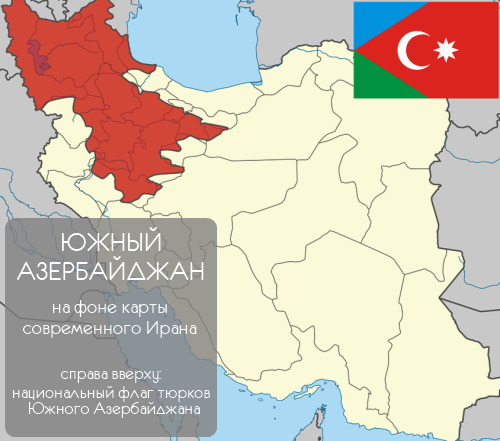 For another three decades, the problem of Azerbaijani separatism was not addressed in the West - London and Washington were satisfied with the policy pursued by the Iranian shah. Accordingly, the Azerbaijani national movement remained an enemy of the Shah's regime, which followed the pledged Rezha Pahlavi in 1920 - 1930. policy of discrimination of Azerbaijanis. Representatives of the Azerbaijani people tried not to admit to senior positions, education in the Azerbaijani language was absent, and the press in the Azerbaijani language was banned. As a result, it was Azerbaijanis who once again in the twentieth century formed the backbone of the Iranian revolutionary movement - this time under religious slogans. The Azerbaijani youth made up a significant part of the fighters of the Islamic revolution in 1979. However, the victory of the Islamic revolution did not greatly change the situation of Azerbaijanis. And this is despite the fact that the Azerbaijanis were a significant part of the participants in the revolutionary events, and the great Ayatollah Mohammad Kazem Shariatmadari was an Azerbaijani by nationality. After the proclamation of the Islamic Republic of Iran, the Azerbaijani language was allowed for use in schools and the media, but autonomy was not granted to Iranian Azerbaijanis. Moreover, the relationship between the two great ayatollahs, Ruhollah Khomeini and Kazem Shariatmadari, which were accompanied by street clashes between Azerbaijani and Persian youth, became seriously complicated. Kazem Shariatmadari was placed under house arrest and was under him until his last days. By suppressing Azerbaijan’s speeches, the new Iranian leadership has turned some of the inhabitants of South Azerbaijan against its policies. At the same time, after turning Iran into one of the main opponents of American and English influence in the Middle East, the United States began to unwind the Azerbaijani theme, trying to play on the Azerbaijani-Persian contradictions.
For another three decades, the problem of Azerbaijani separatism was not addressed in the West - London and Washington were satisfied with the policy pursued by the Iranian shah. Accordingly, the Azerbaijani national movement remained an enemy of the Shah's regime, which followed the pledged Rezha Pahlavi in 1920 - 1930. policy of discrimination of Azerbaijanis. Representatives of the Azerbaijani people tried not to admit to senior positions, education in the Azerbaijani language was absent, and the press in the Azerbaijani language was banned. As a result, it was Azerbaijanis who once again in the twentieth century formed the backbone of the Iranian revolutionary movement - this time under religious slogans. The Azerbaijani youth made up a significant part of the fighters of the Islamic revolution in 1979. However, the victory of the Islamic revolution did not greatly change the situation of Azerbaijanis. And this is despite the fact that the Azerbaijanis were a significant part of the participants in the revolutionary events, and the great Ayatollah Mohammad Kazem Shariatmadari was an Azerbaijani by nationality. After the proclamation of the Islamic Republic of Iran, the Azerbaijani language was allowed for use in schools and the media, but autonomy was not granted to Iranian Azerbaijanis. Moreover, the relationship between the two great ayatollahs, Ruhollah Khomeini and Kazem Shariatmadari, which were accompanied by street clashes between Azerbaijani and Persian youth, became seriously complicated. Kazem Shariatmadari was placed under house arrest and was under him until his last days. By suppressing Azerbaijan’s speeches, the new Iranian leadership has turned some of the inhabitants of South Azerbaijan against its policies. At the same time, after turning Iran into one of the main opponents of American and English influence in the Middle East, the United States began to unwind the Azerbaijani theme, trying to play on the Azerbaijani-Persian contradictions. After the collapse of the Soviet Union and the emergence of an independent Azerbaijan, those Iranian Azeris who were in favor of sovereignty, or at least wide autonomy, had hope of support from northern tribesmen. Indeed, the first president of an independent Azerbaijan, Abulfaz Elchibey, who was a well-known Azerbaijani nationalist and supporter of Pan-Turkist views, provided full support to the Azerbaijani national movement in neighboring countries, primarily in Iran and Georgia. He considered possible the unification of Azerbaijanis and the creation of a new state as part of all the lands inhabited by Azerbaijanis. They did not abandon certain support of the Azerbaijani national movement in Iran and the subsequent leaders of Azerbaijan. Thus, in March, 2002 in Baku was granted asylum by the leader of the movement for self-determination of Iranian Azerbaijan, Professor Mahmudali Chehragani (in the photo). Numerous attempts by the Iranian leadership to secure the extradition of a politician were in vain, as Chehragani found support and understanding from many prominent Azerbaijani politicians and representatives of culture. However, Chekhragani does not openly advocate secession of Iranian Azerbaijan - he states that it is necessary to turn Iran into a federative state with the separation of South Azerbaijan as a separate unit with clearly defined borders and its own capital.
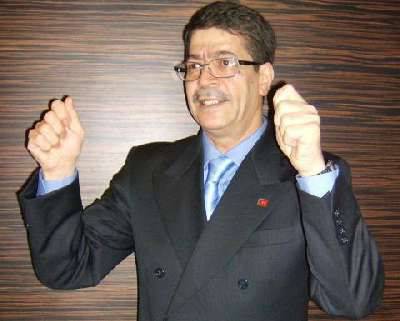
Of course, the Azerbaijani national movement is of particular interest to the United States, since any activity aimed at weakening the integrity of the Iranian state is welcomed by the American leadership. On the other hand, ideas about the possible prospects of reunification with South Azerbaijan are popular among the part of the nationalist intellectuals in sovereign Azerbaijan. But even more support for the activities of supporters of self-determination of South Azerbaijan is found in the West, where there are a number of organizations created by political emigrants from Iran. Among them are the National Awakening Movement of Southern Azerbaijan, Mahmudali Chekhragani, the South Azerbaijan Independence Party of Salekh Ildirim, the Network of American Azerbaijanis from Iran Farzin Farzad, the National Liberation Front of Southern Azerbaijan and a number of other organizations. In March, 2013 hosted a conference in Baku “The Future of Modern South Azerbaijan”, which discussed political events in the Middle East and Iran, Iran’s relations with the United States and European Union countries, and the possible disintegration of Iran following the example of Syria and Iraq, after which inevitably the question of the future of its Azerbaijani provinces will arise. It is possible, the meeting participants argued that they may in the future become part of Azerbaijan. It is clear that such conferences are held by political forces that do not conceal their anti-Iranian and pro-Western orientation, so it is hardly worth identifying the opinion of their participants with the position of the majority of residents of Iranian Azerbaijan.
A number of analysts are convinced of the exaggeration of the real desire of Iranian Azerbaijanis to self-determination. Iranian Mher Baghdasaryan is convinced that there is no Azerbaijani problem in Iran, since many people from the region hold prominent government posts in Iran. By the way, it should be noted that Rahbar Ayatollah Ali Khamenei himself is Azerbaijani by birth, but he is an unconditional supporter of a single and unitary Islamic Iran, within which every citizen’s national origin is irrelevant. According to Baghdasaryan, even in the event of a question of accession, it is unlikely that Southern Azerbaijan with a population of 30 million people will join North Azerbaijan with a population of 9 million. The director of the Russian Center for the Study of Modern Iran, Rajab Safarov, believes that “nationalist sentiments are being fueled by the West in the Republic of Azerbaijan as well. But they do not find support from Iranian Azerbaijanis. Therefore, if the confrontation begins, and the Republic of Azerbaijan will be involved in anti-Iranian policy, then it is ethnic Azerbaijanis who will become the most ardent defenders of the Islamic Republic ”(quoted in: http://www.panorama.am/). According to the Russian expert, the overwhelming majority of Iranian Azerbaijanis are quite satisfied with their position, and national liberation themes are artificially spun by small groups of engaged politicians, mostly living in emigration in the West and actually working for American and European interests. For separatist propaganda, Azerbaijanis are periodically arrested on the territory of Iran’s own territory, but a significant proportion among them are not so much even residents of Azerbaijani provinces of Iran, but natives of sovereign Azerbaijan.
However, 10 in November 2015. The media reported on mass protests of Iranian Azerbaijanis in a number of cities in the country. According to media reports, on Iranian television channel IRIB there were dialogues insulting Iranian Azerbaijanis. In response, a wave of mass demonstrations and rallies against “bullying Azerbaijanis” on Iran’s national television swept through the provinces of Ardabil, East and West Azerbaijan. The demonstrators chanted slogans against the central government and demanded the country's leadership to harshly suppress any xenophobic propaganda in the country. So, the Azerbaijani issue in modern Iran does exist, although not in such a categorical form, as it is described by the American and European, as well as Turkish and Azerbaijani media.
“Kurdish question” does not lose relevance
The Kurdish problem is much more acute in modern Iran. Despite the fact that the number of Iranian Kurds is incomparable with the Azerbaijani population (Kurds make up 5-10% of the country's population), the Kurdish national liberation movement has always been characterized by heightened militancy and a focus on waging an armed struggle for independence. Kurds live in a number of Iranian provinces, informally called Iranian or Eastern Kurdistan (Northern Kurdistan is part of Turkey, Western Kurdistan is Syria, and Southern Kurdistan is Iraq). The composition of Iranian Kurdistan includes the western and southern parts of the province of Western Azerbaijan, the province of Kurdistan, the province of Kermanshah and Ilam. Throughout the twentieth century, Kurdish separatism was for the Iranian authorities no less serious a problem than Azeri separatism, and at some points in Iranian history a much more serious problem. Even during the First World War, when Persia, which was under the control of the Qajar dynasty that lived its last century, was torn apart by internal contradictions, the Kurdish leader Simko, taking advantage of the current moment, seized power in the area to the west of Lake Urmia and declared himself king. A Kurdish state under Simcoe existed from 1918 to 1922. Around the same time, the Gilani Soviet Republic existed (1920-1921) and Tabriz under the leadership of Mohammed Khiabani (1920). However, in 1921-1922. Persian troops managed to restore order in Iranian Azerbaijan, Gilan and Kurdistan. Simko fled and, until his assassination in 1930, tried to conduct a partisan struggle against the Iranian state. At that time, the Kurdish national movement enjoyed the support of British intelligence, which sought to prevent Germanophilism at the court of the Iranian Shah. During World War II, another Kurdish Sheikh Hama Rashid tried to create his own state in Western Iran, but Iranian forces were able to defeat it, despite the support of the British. The Soviet Union also contributed to the support of the Kurdish national movement in Iran. In 1946, with the support of the USSR, the Mehabad Republic was established. It existed for almost a year - from January 22 to December 16 1946, and although it was formally outside the Soviet occupation zone, it was considered as part of the Soviet sphere of influence in Iran. After the fall of the Mekhabad Republic, the Barzani clan that created it moved to Iraq, where it took a key part in the liberation movement of Iraqi Kurds.
After the 1979 Islamic Revolution, the Kurds, who initially supported the overthrow of the Shah regime, hoped to create their own broad autonomy. However, the Ayatollahs who came to power did not support the idea of Kurdish autonomy. The IRGC (Islamic Revolutionary Guard Corps) units were dispatched to Iranian Kurdistan, which clashed with armed units of the Democratic Party of Iranian Kurdistan. With the help of the IRGC, it was possible to neutralize the resistance of the radical part of Kurdish nationalists, who advocated the creation of broad autonomy in Iranian Kurdistan, which left the central government, in fact, only questions of national defense and foreign policy relations. Soon the Iran-Iraq war began, in which the Iranian Kurds took part, retreating into Iraqi territory and defending Saddam Hussein’s army. The Iraqi leader in general favored any Iranian opposition - he sheltered both Iraqi Iranian Kurds and Iranian left-wing radical militants. During the Iran-Iraq war, Iranian Kurds established relations with the United States of America, which actively supported Saddam Hussein at that time. The American leadership viewed the Kurdish problem as another trump card in the fight against Islamic Iran, and therefore provided the Kurdish national movement with some support, including informational. The Western media published reports about the struggle for the liberation of Iranian Kurds, respectively, accompanied by criticism of Islamic Iran. Therefore, it is not surprising that for more than thirty years Iran has been considering the “Kurdish problem” as a result of the machinations of the United States and Israel and is extremely negative about any discussions on the situation of Kurds in Iranian Kurdistan.
There are objective reasons for being unhappy with Iranian Kurds. Iranian Kurdistan is one of the most socio-economically backward territories of the country. Distant cattle breeding is still practiced here, and the remnants of the tribal system remain in the social organization of local Kurds. Naturally, the population of Iranian Kurdistan as a whole lives much poorer than residents of more developed regions of the country. In addition, Iranian Kurdistan is characterized by rapid demographic growth, combined with a lack of jobs and the ability to feed the growing population of mountainous provinces. As a result, Kurdish youth join the ranks of seasonal workers and urban unemployed, which contributes to the spread of radical ideas among desperate. With the ideas of autonomy among the Iranian Kurds are hopes for improving the social and economic situation of their home provinces. Meanwhile, the idea of the need to replace police-repressive measures to “pacify” Iranian Kurdistan with programs for its socio-economic and cultural development reached the central Iranian government only during the years of the Khatami’s presidency. At that time, the first elementary schools with instruction in Kurdish and the first newspapers, also published in Kurdish, began to be created in Iranian Kurdistan. An important political measure was the provision of 40 seats in the Mejlis of Iran (from 290 seats) to Iranian Kurds. Given that the defining position in Iranian Kurdistan has always been the traditional tribal nobility, the central government was able to negotiate with those who determined the consciousness of the Kurdish population of the western Iranian provinces. It is likely that after a while the policy of modernizing Iranian Kurdistan would have yielded results and would have led the region to reduce separatist sentiment, but the peaceful course of events in the region was disturbed by the war in neighboring Iraq.
After the emergence of an autonomous Iraqi Kurdistan, which in fact is an independent state entity, the national movement of Iranian Kurds, which received the example of the birth of the first Kurdish state, became active again. The new wave of national liberation attitudes was explained, firstly, by the ambitions of the Kurdish elite, who were trying to create their own state formation on the model of Iraqi Kurdistan, and secondly - by the geopolitical game of the United States of America, which once again relied on the Kurdish movement. It is clear that the Kurds are pursuing a quite understandable task - the creation of their own national state on the lands inhabited by their fellow tribesmen. For the largest “stateless” people of the world, finding one’s own statehood is one of the most important tasks. Another thing is that the United States persistently turns Iranian Kurds into an instrument of subversive activity against Islamic Iran. In itself, the revitalization of the Kurdish movement in Iran can in the long term lead to a destabilization of the situation, at least in the western part of Iran. It is for this purpose that militants of radical organizations penetrate into Iraqi Kurdistan from Iraq. In March, 2006 in Erbil, in Iraq, was established by the United Front of Eastern Kurdistan. The front consisted of the Democratic Party of Iranian Kurdistan, the Organization of the Struggle of Iranian Kurdistan and the Revolutionary Union of Kurdistan. On the left flank adjacent to the front is the Revolutionary Party of Workers of Kurdistan (Comal). Another organization is the Kurdistan Free Life Party, which also leads the partisan struggle in Iranian territory. The actions of the Kurdish radical organizations led to the beginning of the anti-terrorist operation of the Iranian government forces, conducted by the Islamic Revolutionary Guard Corps in Iraq, where the main bases and training camps of the Kurdish national liberation movement are located.
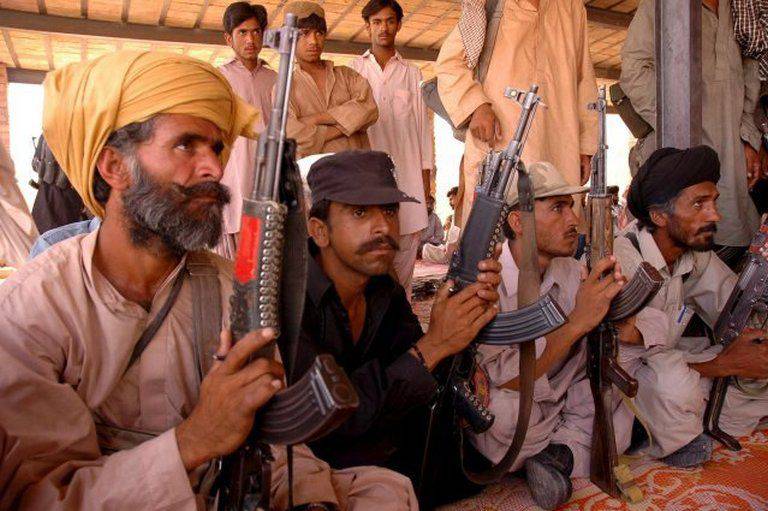
Militant Balochi
A troubled situation has developed in the south-eastern part of Iran. The Baluchis live here - one of the largest Iranian-speaking peoples, inhabiting also the adjacent areas of Pakistan and Afghanistan. Unlike the bulk of the Iranian population, the Baluchis practice Sunni Islam of the Hanafi madhhab. This nation, inhabiting the desert region on the shores of the Arabian Sea, is still distinguished by archaic forms of social organization. However, the Baloch tribes are a real force in this part of Southwest Asia, with which both the Pakistani and Iranian authorities are forced to reckon. As for Afghanistan, the central government is not able to control the peripheral areas inhabited by Baloch tribes at all. The territory of residence of the Baluchi tribes was subordinated to Iran only by 1928, when the forces of Reza Shah Pahlavi managed to suppress the resistance of the Baluchis and take the main centers of the region under formal control. The policy of the Pahlavi dynasty regarding the Baluchis was the same as that of the other peoples of Iran - the central government did its utmost to prevent the national consolidation of the Baluchis and the development of their national identity, for which they continued to support the archaic components of the social organization of the Baluchis. After all, control over a people divided into tribes is facilitated at times. Naturally, at the same time, the socio-economic infrastructure of the territories inhabited by the Baluchs practically did not develop. The province of Sistan-Baluchistan, in which most Iranian Baluchis live, is the largest region of the country in territorial terms, but is located on the periphery of Iran, far from the main economic and cultural centers of the country. Of course, Sistan-Baluchistan is the poorest province of Iran, in which both economic and cultural spheres of life activity are at an extremely low level of development. The border with Pakistan and Afghanistan is practically transparent, since the Iranian troops are not able to provide full-fledged security for the thousand-kilometer frontiers that pass through the most real desert. Naturally, the impoverished province is faced with a number of problems, generated, first of all, by the combination of high birth rates and the lack of jobs and life prospects of Baloch youth.
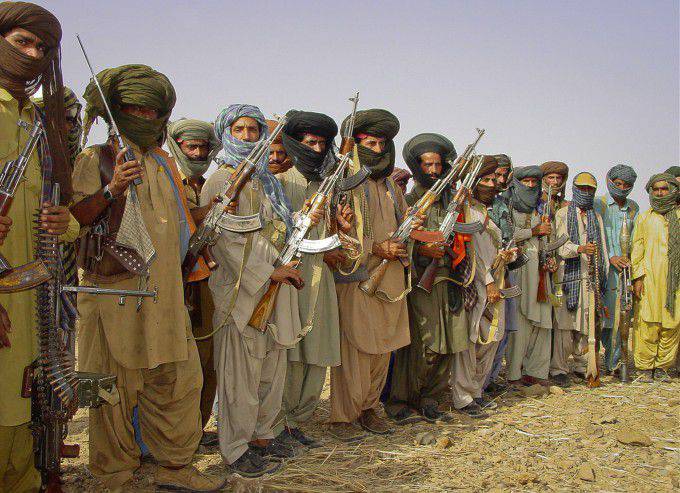
Since 1948 Balochi are fighting for independence against Pakistan and Iran. Back in the city 1964 The Baluch Liberation Front was created, led by Jumma Khan Baloch, who maintained ties with Arab nationalists who were desperate to destabilize the situation in the then Shah's Iran. The front played an important role in the uprising that broke out in 1968. and lasted until xnumx The uprising spread to both the Iranian and Pakistani parts of Balochistan. В 1968-1973 гг. The front enjoyed the support of Iraq, which remained one of the key opponents of Iran in the Middle East. In fact, it was Iraq in the 1960-th - 1980-s. played a major role in the formation and development of the armed insurgency in the territory of Iranian and Pakistani Baluchistan. In Pakistan, the Baloch rebellion was suppressed in 1977. - and only through a large-scale military operation. During the Iran-Iraq war, Saddam Hussein made repeated attempts to stir up the flames of civil war in the territory of Iranian Balochistan, but he did not succeed, even despite the impressive financial contributions to the organizations of the Baloch separatists. The Iraqi special services supported and sponsored the Baloch autonomist movement led by Abdul Aziz Mollazade. After the end of the Iran-Iraq war, most of the movement’s activists were forced to emigrate from Iran and settle in the countries of the Persian Gulf. On the basis of this organization, the radical Jundalla movement (“Soldiers of God”), also referred to as the Iranian Popular Resistance Movement, subsequently arose. When in 2003 the organization “Jundalla” began to take responsibility for its first actions, its head Abdolmleke Riga was only twenty years old. In 2005 was Jundalli’s militants attacked the motorcade of Iranian President Mahmoud Ahmadinejad, who visited Sistan-Baluchistan. During a shootout, one of Ahmadinejad’s bodyguards was killed, and several other officers were injured. 16 March 2006 city Jundalli militants near the village of Tasuki shot an 21 civilian. 14 February 2007 city a car was blown up, which approached a bus in which soldiers of the Islamic Revolutionary Guards were traveling. An 18 man died during the explosion, the 31 man was injured. After that, the Iranian secret services took unprecedented measures to catch terrorists, as a result of which they arrested seventeen-year-old Saeed Kanbarzehi. Despite the minor age, the young man was executed. 17 February 2007 city radicals staged a blast at a girls' school, and 13 Jun 2008 Militants have kidnapped 16 Iranian policemen. All the prisoners were taken to the territory of Pakistan, and then killed. January 25, 2009 the militants have still massacred 12 by the police. October 18 2009 of the year Dzhundalla conducted a series of explosions in Pishin. As a result of the attacks, several senior and senior officers of the IRGC, including General Nur-Ali Shushtari, commander of the ground forces of the IRGC, and Radjab Ali Mohammadzade, commander of the IRGC troops in the Sistan-Baluchistan ostan, died. 23 February 2010 city Iranian secret services succeeded in arresting leader Jundalli Abdolmalek of Riga. 20th of June 2010 he was executed.
The activities of the Baluch separatists led the Iranian leadership to a significant increase in security measures in the province of Sistan-Baluchistan. Additional military units of the Guardians of the Islamic Revolution were deployed in the region. But, in addition to enhancing security measures, the Iranian government is well aware of the need to act through the "carrot policy". Thus, to attract Baloch youth to the government’s side, a sergeant training center was opened in Zabol, in the province, with the advantage of being received by the Baluchis and Pashtuns. In addition, Iran is considering plans for the development of railway communication through Sistan-Baluchistan. However, in the light of recent developments in the Middle East and the general deterioration of the economic situation in Iran, plans to modernize the Baloch territories may be disrupted. It is possible that the Baluchi groups will join the "Islamic State" (a terrorist organization banned in Russia), at least - the likelihood of such a development of events exists, although it will be harshly suppressed by Iran.
Summing up, it should be noted that separatism is a very real threat not only to national security, but also to the territorial integrity of the Iranian state. Despite the fact that Iran has sufficiently strong armed forces and effective intelligence services, the problems of separatism cannot be solved only by force. The history of the resistance of Azerbaijanis, Kurds, Baluchis and other peoples, dating back not less than a century, is a typical example. In the conditions of socio-economic problems, inequality, cultural backwardness, radical and separatist sentiments spread very quickly, especially in the case of support from the “external actor”, which in the case of Iran clearly remains the United States. With proper support, separatist movements can significantly destabilize the situation in the country, or at least turn areas of residence of national minorities into a field of civil war. However, so far Iran is more or less effectively coping with attempts to kindle a fire of national uprisings on its territory. But the situation in the country, ultimately, very much depends on how events will develop in the Middle East and what will be the final armed confrontation in Syria and Iraq.
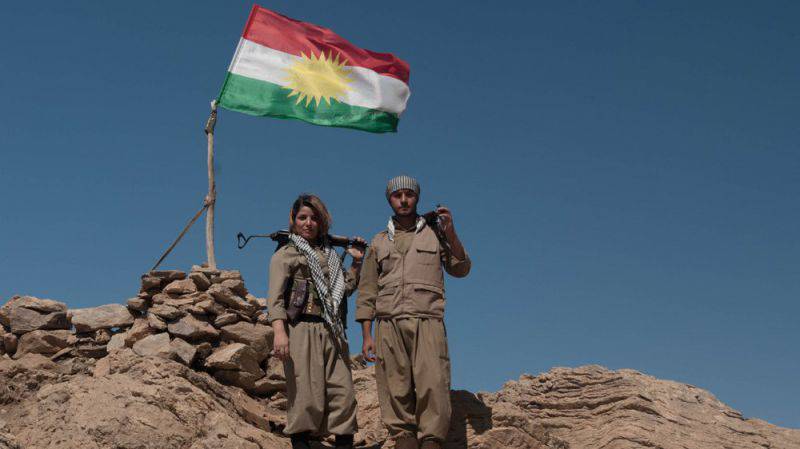
Information